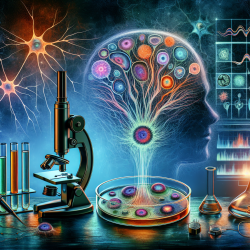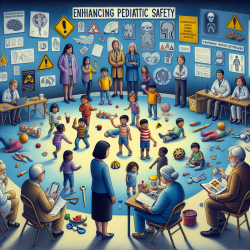The landscape of therapeutic strategies for Neuronal Ceroid Lipofuscinoses (NCLs), commonly known as Batten disease, is evolving with the advent of patient-derived induced pluripotent stem cell (iPSC) models. These models offer a promising avenue for understanding the complex pathophysiology of this group of rare, fatal neurodegenerative disorders and provide a robust platform for phenotypic screening and drug discovery.
The Role of iPSCs in NCL Research
NCLs are characterized by progressive neurological decline, leading to symptoms such as vision loss, seizures, and cognitive impairment. Despite the identification of numerous gene mutations associated with NCLs, effective treatments remain limited. This is where iPSCs come into play. iPSCs can differentiate into any human cell type, making them an invaluable tool for modeling diseases in a laboratory setting. By reprogramming cells from patients with NCLs, researchers can create disease-specific models that closely mimic the human condition.
Key Findings from iPSC Models
- Disease Mechanism Insights: iPSC models have shed light on the cellular mechanisms underlying NCLs, including lysosomal dysfunction and autophagy impairment. These insights are crucial for identifying potential therapeutic targets.
- Drug Screening: The use of iPSCs allows for high-throughput screening of drug candidates. For instance, studies have demonstrated that certain compounds can rescue phenotypic abnormalities in NCL iPSC-derived neurons.
- Gene Therapy Validation: iPSC models have been instrumental in validating gene therapy approaches. For example, AAV-mediated gene therapy has shown promise in restoring enzyme activity and ameliorating disease symptoms in iPSC-derived models.
The Path Forward: Challenges and Opportunities
While iPSC technology offers significant advantages, there are challenges to overcome. Variability in iPSC lines can lead to inconsistent results, necessitating the use of gene-editing technologies like CRISPR to create isogenic controls. Additionally, the complexity of co-culture systems required to fully replicate the brain environment poses a barrier to high-throughput screening.
Despite these challenges, the future is promising. The increasing availability of commercial iPSC lines opens up opportunities for non-specialized researchers to engage in NCL research. As more complex co-culture systems are developed, our understanding of NCLs will deepen, paving the way for novel therapeutic interventions.
The integration of iPSC technology into NCL research not only enhances our understanding of these disorders but also accelerates the development of targeted therapies. By leveraging this technology, researchers are poised to make significant strides in improving the quality of life and lifespan for individuals affected by NCLs.
To read the original research paper that inspired this discussion, please follow this link: Patient-Derived Induced Pluripotent Stem Cell Models for Phenotypic Screening in the Neuronal Ceroid Lipofuscinoses.










